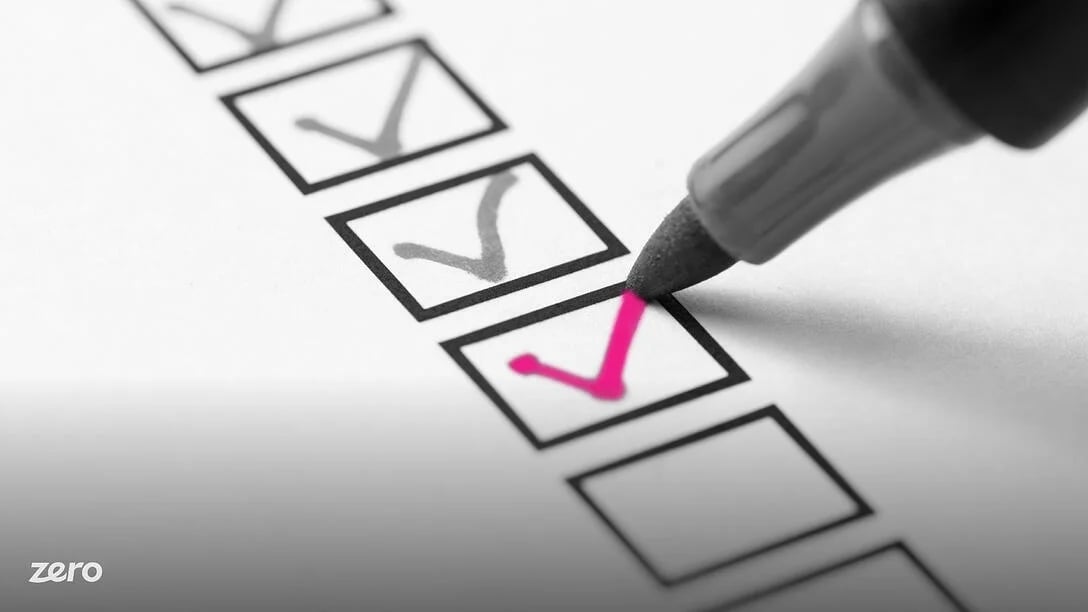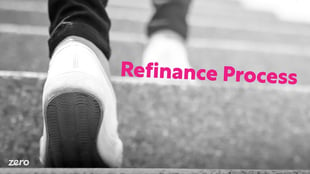Mortgage Refinance Checklist

Refinancing can open up opportunities for homeowners to cash out on equity, reduce monthly mortgage payments, or renegotiate the interest rate on their home loan. However, the paperwork and knowledge needed to navigate a refinance can be monumental, and the process can easily become overwhelming.
We wrote a whole blog covering the full refinance process, read it here!
We’ve compiled an extensive checklist of documentation that you as a homeowner will want to prepare ahead of beginning your refinance process. Having all of this paperwork in order can help streamline the process and make refinancing a less stressful and more exciting process.
What Documents Are Needed for Refinance?
Homeowners will want to prepare their documentation ahead of time and should know that requesting paperwork from the city and financial institutions can take up to a few weeks. If you are applying for a mortgage with a spouse, you can pool resources and get better interest rates. However, if your spouse has a low credit score or a higher amount of debt, you may need to apply as an individual.
If you apply together, note that it may be best that both of you collect all individual paperwork for the requirements below.
Personal Identification
One of the first things you’ll likely need is your own verified personal identification. If you are a U.S. citizen, bring a valid driver’s license to appointments with lenders and be ready to provide your Social Security number.
Current Mortgage Details
Pull together any paperwork detailing your current mortgage to have it ready for your lender to verify. This includes the deed, deed-in-trust, and all of the details of your mortgage cost, interest rates, and other fees.
Income Verification
To feel confident that the terms of your new loan are conducive to your personal financial situation, lenders will want to see your proof of income. Be prepared to show records of pay stubs for the past thirty days at a minimum.
Ongoing Debt
Most Lenders will pay close attention to your current debt situation to help discern your ability to make payments and stay above water. You will want to collect paperwork detailing the history and current situation of any debts, including your mortgage, student and auto loans, credit card balances, and home equity loans.
Credit History
Lenders will pull your credit history to verify your credit score and any outstanding credit debt. If you’re submitting claims to more than one lender, consider providing your own copy of a credit report before they pull your credit, since multiple credit checks can result in lowering your credit score.
Whichever lender you choose will require an official credit check, but having a copy on-hand might help avoid preliminary checks before you’ve narrowed down your choices, which will help maintain your score in the long-term.
Letters of Explanation for Credit Issues
Be prepared for your lender to ask for a letter of explanation for credit issues. A request for a letter in no way bars you from being eligible for a refinance, but simply serves as a chance to explain missed payments, dips in credit score, or other shifts in your credit history.
Lenders will also ask for letters of explanation for applicants who have been living rent-free or who have large gaps in their employment. Be prepared to provide any additional documentation that might support what you write in your letter.
Tax Information
Lenders will need a copy of your most recent tax return along with tax forms you’ve received from employers or sent to employees and contractors (1099’s, W-2’s, and the like).
Appraisal
Your lender will most likely require a current appraisal of your home. This ensures that you aren’t asking to borrow more money than the home is worth, and takes into account any renovations and changes made to the property over the years. Lenders typically hire third-party appraisers, so it’s worth preparing to have a stranger walk in and around your home and property in preparation for the refinance.
Homeowner Insurance
Prepare to show documentation of your homeowner insurance coverage and history of past payments to verify that your policy covers your home. If the appraisal shows that your home is worth more than what it was at the start of your insurance, you might need to adjust the policy to cover the new value.
Title Insurance
Your title insurance taken out with your first mortgage can cover any potential losses associated with the property’s past (fraud, unpaid taxes, etc.) that you might have not known about. The title insurance can also protect your mortgage lender; so they will want to see a copy of it as part of your paperwork.
Bank Statements
In addition to proof of income, lenders will want to see proof of your assets. This entails paperwork detailing your savings account along with any CD and retirement accounts, stocks, bonds, and mutual funds, and information on any other investment property that you own.
Payment History
Lenders will want to see that you’ve been able to make regular payments of the full amount towards your mortgage. This is typically reflected in your credit score, but you’ll want to be able to provide records of your payments and relevant bank statements if requested.
Profit & Loss Statement
If you’re a business owner or a self-employed freelancer, prepare to show lenders a profit and loss statement. This shows not only the income you’ve made but explains serious purchases or reasons for lowered credit scores. If you are unable to provide income verification from another company, the profit and loss statement helps lenders know more about your income and the expenses related to your business.
Court Order or Judicial Decree
If you’re refinancing as part of a divorce, prepare to bring proof of alimony that you are paid or owed as part of your proof of income. You’ll also want to bring documentation of any court order or judicial decree that’s relevant to the refinance as well.
If you're unfamiliar with the fees commonly associated with refinancing, read all about them here.
How to Use the Refinance Checklist
Each lender has slightly different requirements for what paperwork they’ll need to evaluate your refinance eligibility, so think of this checklist as a set of guidelines of what you might expect to be asked to provide. Make sure to include any additional paperwork that will help explain your financial history and show your ability to make on-time payments and pay off the closing fees associated with the refinance.
Our Mortgage Learning Center features blogs on a wide range of mortgage and refinancing topics.
Preparing for Your Refinance
Refinancing can be both exciting and overwhelming. If you are able to collect your documentation and prepare in advance for credit checks and income verification, it will be a lot easier to shop lenders and get a good understanding of your options. Use this checklist to apprehend what you’ll need to bring to have a smooth refinancing process.
Let's Get You Refinanced!
This page last updated: October 6, 2022
Read more on this topic below.

A mortgage is often the largest monthly expense homeowners pay. The thought of reducing the amount...

It’s likely that your mortgage loan will be the largest loan you have during your lifetime. Mortgages are not a one size...

Refinancing your home can save you thousands of dollars per year! When you extrapolate that savings over...

A loan estimate is crucial to obtain when looking for a loan. This estimate not only gives you the details of a mortgage but also compares offers...

If you’re looking to buy a house, and do not have a mountain of cash saved up, you’ll need to consider getting a mortgage to help you finance this...

Whenever you are borrowing money, whether it’s for a new mortgage, a refinance, credit card, or car loan, you’ll hear...

The interest rate on a mortgage is simply the fee a lender charges the borrower for borrowing their money. Over the...

A cash-out refinance is the process of taking the equity you have built in your home in the form of a cash deposit into a designated account...

Consider this scenario. You bought a house several years ago, and at the time, you thought you got a pretty great...
